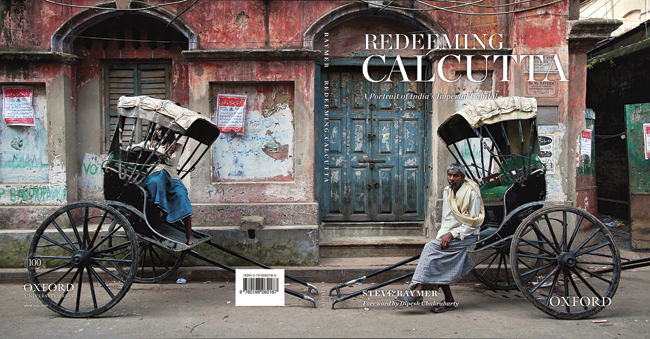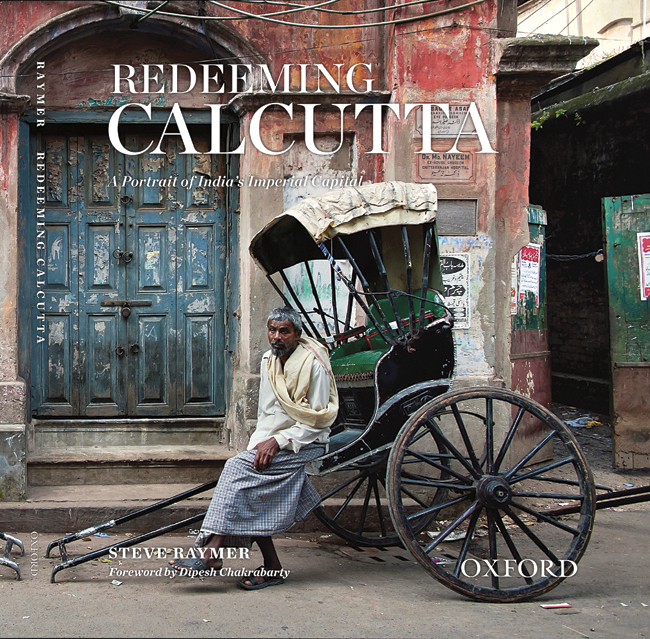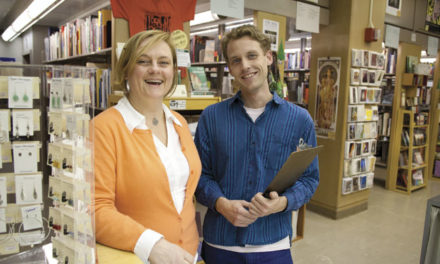
Dust jacket of “Redeeming Calcutta.” Photo by Steve Raymer.
BY ADAM KENT-ISAAC
Calcutta was India’s capital when that country was a colony and a “jewel in the British crown.” Today it’s best known as “a byword for unspeakable poverty,” says Steve Raymer, IU photojournalism professor (and Bloom Magazine’s principal photographer), who sought to present a more nuanced view of the city in his new book, Redeeming Calcutta: A Portrait of India’s Imperial Capital (Oxford University Press).
In the course of writing and photographing the work, Raymer visited the city six times. It is, he says, “a place of considerable charm, beauty, and intrigue, where the citizens possess a certain joie de vivre for high culture, political debate, and, increasingly, making money.”
Calcutta (now known as Kolkata) has long attracted Raymer, who traveled the world as a National Geographic staff photographer for 25 years. “Calcutta was a mystery of a city that I knew nothing about and had never visited,” he says. “In all of my reading, from Kipling to Paul Theroux, it had intrigued me.”
In the course of his explorations, Raymer says he “discovered many faces of Calcutta—the decrepit colonial capital, the modernizing Indian metropolis…a city that takes pride in its architecture, public spaces, and exceptional character, as well as its intellectual achievements, including five Nobel Prize winners.”
Redeeming Calcutta is the first of Raymer’s (several) books in which he’s had an active hand in the layout, working with former IU student and graphic designer Larry Buchanan. The sharp, wide photographs capture Victorian palaces and shantytowns, Communist Party meetings and mosques, the fiber-choked air of a jute mill and the commotion of crowded streets. None of it came easily, acknowledges Raymer.
Suspicious police were often looking over his shoulder. One aerial shot necessitated a trek up a harrowing eight-lane overpass; another required him to charm his way onto private balconies in search of the perfect view. And “a tough nun from Toledo, Ohio,” repeatedly turned him away from a hospice established in 1950 by Mother Teresa. (He finally got in, with some help from the U.S. Consulate General.)
Raymer says he tackles such projects for one simple reason: It’s his job. “Professors are supposed to be creating new knowledge.”











